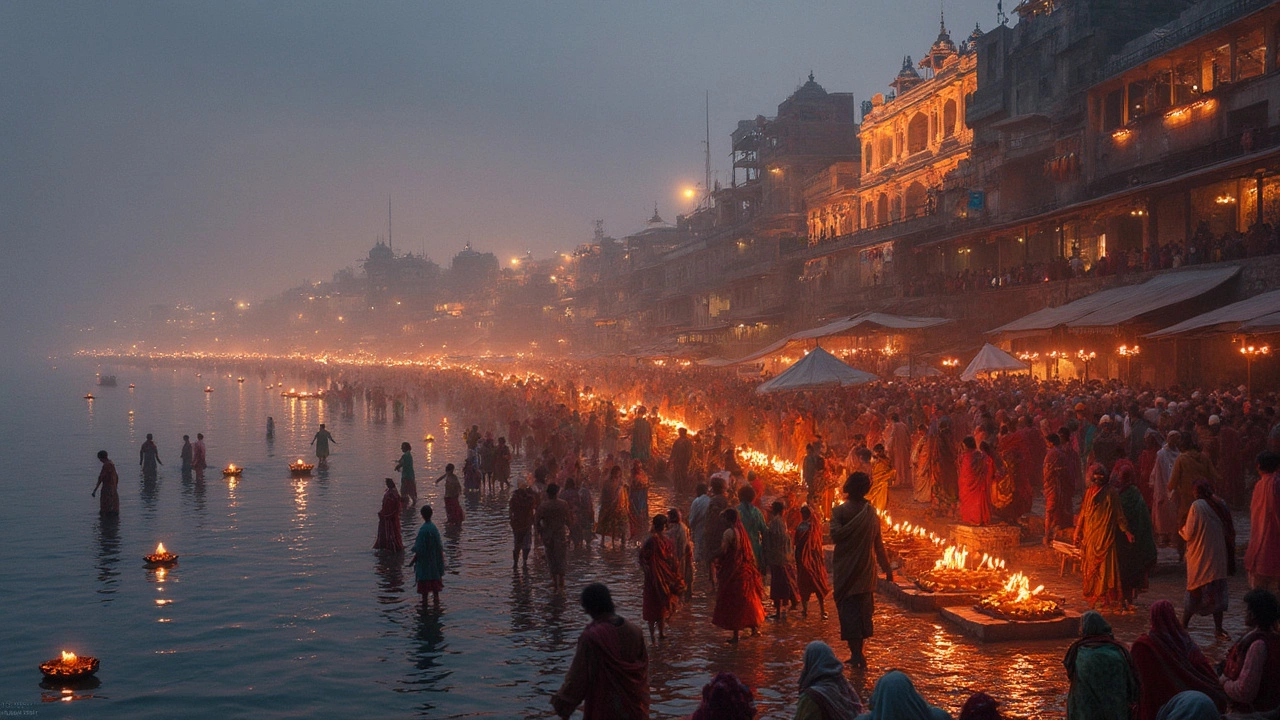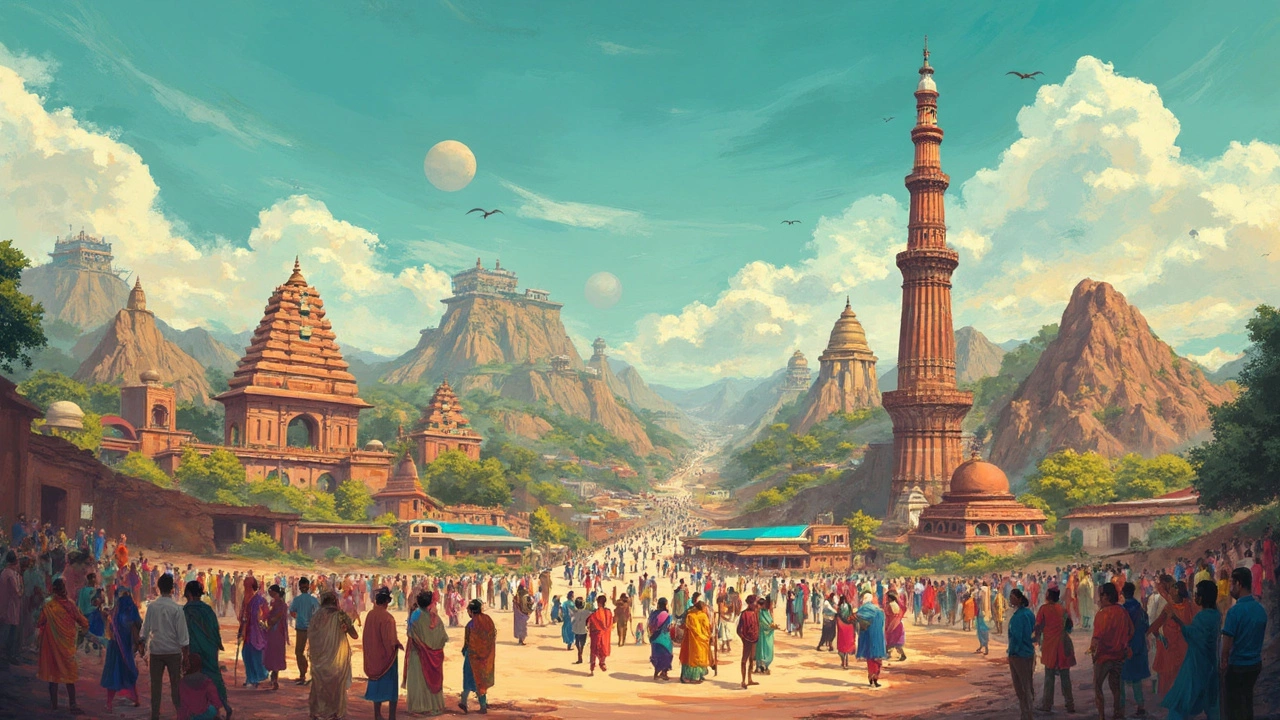So ever wondered what makes India such a magnet for heritage buffs? This country is home to one heck of a cultural smorgasbord! Picture a place where every turn you take feels like you’re time-traveling through centuries of history—yeah, that’s India for you. It’s not just about a few famous monuments; it’s about the stories, traditions, and cultural quirks that bring the past into the present. Let's jump right into the heart of it all.
Imagine standing in front of the Taj Mahal, feeling the love story it stands for, or walking through the bustling streets of Varanasi, where spirituality practically seeps from the walls. India’s heritage isn't just stuck in the past; it's alive and buzzing in the here and now.
These sites aren’t just bricks and mortar; they’re living testaments to India’s diverse history. Each one has its vibe, its tale, ready to sweep you off your feet. Ever think about how these spots stay so beautiful? It’s all about how they’re cared for and celebrated, which is a whole other story of its own.
- The Wonders of Indian Architecture
- Spiritual Heritage and Sacred Sites
- Festivals that Paint the Town
- Preservation of Traditions
- Heritage Tourism in India
The Wonders of Indian Architecture
Alright, let’s dive into why Indian architecture is such a big deal. Think of it like a mood board of materials, designs, and influences that have been around for centuries. It's like India’s cultural DNA set in stone—or marble, or sandstone. What's awesome is how every region throws its own unique spin into the mix, making each structure a one-of-a-kind masterpiece.
First stop? The Taj Mahal. This iconic landmark ain't just a tourist spot; it's a UNESCO World Heritage Site and stands as a symbol of eternal love. Built by Mughal Emperor Shah Jahan in memory of his wife, Mumtaz Mahal, it’s a stunning mix of Persian and Indian architectural styles that’ll leave you in awe.
Head down south, and you’ll stumble upon the intricate temples of Tamil Nadu, like the Brihadeeswarar Temple with its majestic gopurams (gateway towers) that literally touch the sky. These temples tell not just religious tales but also stories of dynasties that ruled for centuries. Can you believe some of these temples have carvings with as much drama as a Netflix series?
Oh, and let’s not skip the palaces of Rajasthan like the Amer Fort, which is all about Rajput architecture mixed with influences from Mughals. It has these gigantic ramparts, beautiful gates, and cobbled paths. Plus, the Sheesh Mahal or 'Mirror Palace' is a sight to behold with mirrors covering the ceiling so it sparkles like a starry sky.
And here’s a quote from an Indian architect that sums it up beautifully:
"Every brick and mortar of India speaks of its age-old history, embracing both simplicity and grandeur." – Anupama Kundoo
If you’re more into forts, check out Agra Fort, which is just a stone's throw from the Taj Mahal. Built by the great Mughal Emperor Akbar, this fort is a mini-city of palaces, mosques, and audience halls. It’s like Bam, history in your face!
Now, when it comes to preserving these incredible heritage sites, India takes it pretty seriously. Plans for conservation and responsible tourism mean you can experience these wonders without messing them up for future generations. So next time you're there, soak up the stories, snap loads of pics, and leave knowing you’ve seen more than just walls and towers—you’ve seen pieces of history.
Spiritual Heritage and Sacred Sites
India is basically the headquarters of spirituality, right? It's home to some of the oldest and most revered sacred sites in the world. Think of it as a giant spiritual theme park! From the holy riverbanks of the Ganges in Varanasi to the towering temples in Tamil Nadu, there's a whole universe of spiritual experiences waiting for you.
Ever heard of the Kumbh Mela? This mega-event takes place every 12 years in various spots like Allahabad (now Prayagraj) and Haridwar. Imagine millions of people gathering, all with one thing on their mind: taking a dip in the sacred river to wash away their sins. It's one of the largest peaceful gatherings on Earth and a true spectacle!
Then there's the Golden Temple in Amritsar, a shimmering vision in gold that offers not just spiritual solace but also a free meal to anyone who visits, no matter who you are. Talk about hospitality! It's the heart and soul of the Sikh religion, and the energy there is something else.
Now, let's talk temples. Ever been to the Sun Temple in Konark? Built like a giant chariot, it's not just about worship but a peek into stunning ancient architecture. Or, take a trip to Tirupati Balaji Temple in Andhra Pradesh—one of the most famous and busiest in the country. People travel far and wide to offer their prayers.
These sacred sites aren't just for the devout—they offer insight into India's diverse religious beliefs and practices. Each spot shares tales from history, and the rituals and ceremonies give you a first-hand view of what makes Indian spirituality tick.
So, next time you're planning a trip, make sure you hit a few of these sites. They're more than tourist destinations; they're windows into the very soul of India.

Festivals that Paint the Town
Ever been to a place where the energy during festivals is so infectious, you can feel it to your core? That’s exactly how India is with its cultural heritage expressed through vibrant festivals. What makes these events beyond just celebrations is the diversity. It's like every region contributes its unique flavor to the party, creating a nationwide chorus of colors, sounds, and traditions.
Take Holi, for example, often called the festival of colors. Here, you'll see a burst of hues as people throw colored powders at each other, dance to upbeat music, and indulge in sweet treats. Holi signifies the victory of good over evil and the arrival of spring, which is a big deal in the Indian calendar.
Then there's Diwali, the festival of lights. During this time, homes are adorned with oil lamps and colorful rangolis, and the sky lights up with fireworks. It’s a celebration of light triumphing over darkness, and no town in India is left untouched by its glow.
If you’re into something more spiritual, then the Kumbh Mela should be on your bucket list. This massive pilgrimage gathering, held every 12 years, is all about spirituality, with millions taking a dip in sacred rivers to cleanse themselves of sins. It's the world’s largest congregation of its kind, showcasing India's deep-rooted spiritual heritage.
- Taj Mahal often gets into the limelight, but it's during local festivals that you truly see the lively spirit of Indian culture.
- Every festival, big or small, offers a peek into the age-old traditions that still hold their charm.
Whether it's feasting on festive foods or participating in traditional dances, every festival brings an opportunity to dive into the authentic Indian culture. So if you're planning a trip, try syncing it with one of these vibrant celebrations. It’s an experience that brings heritage to life in the most fun way possible!
Preservation of Traditions
Preserving traditions in India isn’t just some side hobby; it's a fundamental part of maintaining the country's vibrant cultural tapestry. Some traditions have been around for millennia, and despite the whirlwind of modernity, many communities are fiercely protective of their Indian culture and heritage.
Take, for instance, the art of Indian classical dance forms like Bharatanatyam and Kathak, which have roots stretching back centuries. They're not just taught in schools or performed on stage; they're part of festivals, celebrations, and even everyday life in some regions. Dance schools across the country ensure these cultural heritages are passed from one generation to the next. Parents consciously enroll their kids in lessons to keep the tradition alive.
When it comes to food, certain regions pride themselves on using age-old recipes that have barely changed. Think about how Kerala maintains its age-old Ayurvedic cooking methods, offering a taste of history with every dish. It’s like a delicious tradition that’s literally passed down on the dining table.
A big part of preserving these traditions involves the local communities taking charge. There are countless folk festivals where locals enthusiastically play traditional instruments, wear traditional clothes, and perform rituals that have practically turned into cultural time capsules. An example is the Hornbill Festival in Nagaland, showcasing the rich ethnic culture of North East India.
But it’s not just about the communities themselves; the government’s got a hand in it too. There are numerous initiatives aimed at preserving and promoting the Indian heritage sites that dot the landscape. Through funding, technical support, and promoting domestic tourism, these efforts ensure that these landmarks and their stories won't be lost to time.
Check out the preservation efforts at heritage tourism sites like Hampi, where the ruins of a once-great empire are being carefully maintained so visitors today can get a taste of ancient life in India. It’s all about striking the right balance between celebrating the past and embracing the new, and India seems to be doing a darn good job of it!

Heritage Tourism in India
Alright, let’s talk about heritage tourism in India. It's like a treasure hunt where every stop is more breathtaking than the last. With over 40 UNESCO World Heritage Sites, India pulls out all the stops when it comes to offering a one-of-a-kind cultural experience. From the sprawling forts of Rajasthan to the intricate temples of Tamil Nadu, there’s something for everyone.
Take Jaipur’s Amber Fort, for instance. It’s not just a fort; it's a living story of bravery and architectural brilliance. And if you're in Maharashtra, the Ajanta and Ellora Caves take you on a rollercoaster ride through ancient times with their jaw-dropping carvings and paintings.
It’s not just about seeing the sights—heritage tourism is a super way to get in touch with the heart and soul of India. Imagine tasting the authentic flavors of local cuisines, experiencing traditional dance forms, and maybe even picking up a few words in the local language.
Now, for those who like their stats, here’s something cool: According to the Ministry of Tourism, heritage tourism contributes significantly to India's economy, with millions of visitors flocking each year to explore these stunning sites. It's a win-win; preserving history while boosting local livelihoods.
Considering a trip? Here are a few tips to spice up your journey:
- Plan your visit during the off-season for a more intimate experience with less crowd.
- Hire a local guide—they often know the hidden gems and can tell stories you won't find in guidebooks.
- Try staying in heritage hotels or homestays for that extra slice of history mixed with local hospitality.
- Don’t skip the local handicrafts. It’s like taking a piece of history home with you.
So, if you’re eager to dive deep into the layers of history and culture, heritage tourism in India is your ticket to an unforgettable adventure!
